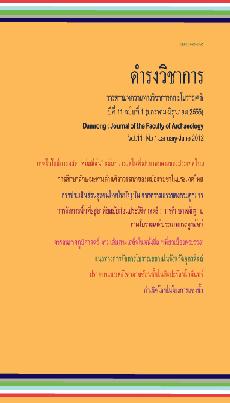INTERPRETATION OF SYNTACTIC AMBIGUITY IN ENGLISH SENTENCES AS DEMONSTRATED BY HIGH AND LOW COMPETENCE THAI LEARNERS
Keywords:
การตีความ, ความกำกวม, ประสบการณ์ทางภาษาอังกฤษAbstract
The objective of this research is to analyze and compare Englishsentence syntactic ambiguities with their interpretations by native speakers and English language learners. Thirty ambiguous English sentences were used as the foundation for the study; divided into three types: simple sentences, compound sentences and complex sentences. Three sample groups were set up: 1) 10 native speakers; 2) 20 non-native students with high English language competence; 3) 20 non-native students with low English language competence. The results showed that the native speakers correctly interpreted 96.8% of the ambiguous English sentences. The high competence languagelearners correctly interpreted 93% of the ambiguous English sentences,and the low competence English language learners correctly interpreted 69.25% of the ambiguous English sentences. The high competence English language group was able to interpret the ambiguous English sentences to a similar success rate as the native speaker group, and far more successfully than the low competence English language learner group. The difference between the native speaker group and the high competence group was not statisticallysignificant (P= 0.152) whereas the difference between the native speaker group and the low competence group was statistically significant (P= 0.00). The difference between the high competence group and the low competence group was also highly significant (P= 0.00).The differences between the low competence/high competence groups and the high competence/native speaker groups was also shown to be statistically significant (F = 82.479, P = 0.00). The study demonstrates that second language learner levels of competence affects the ability to interpret ambiguous English sentences. This study highlights the problem ‘interpretation of ambiguity’ and offers some suggestions for English language instruction.
References
สุไร พงษ์ทองเจริญ. (2519). ความหมายหลายนัยในโครงสร้างภาษาอังกฤษ = Ambiguity in English. กรุงเทพฯ: มหาวิทยาลัยศรีนครินทรวิโรฒ ประสานมิตร.
Brown E.K. and Miller J.E. (1980). Syntax: a linguistic introduction to sentence structure. London: Hutchinson.
Corder, S. P. (1981). Error analysis and interlanguage. Oxford: Oxford University Press.
Ha, J. A. (2005). Age-Related Effects on Syntactic Ambiguity Resolution in First and Second Languages: Evidence from Korean-EnglishBilinguals. In Proceedings of the 7th Generative Approachesto Second Language Acquisition Conference (GASLA 2004), ed. Laurent Dekydtspotter et al., 111-123. Somerville, MA: Cascadilla Proceedings Project.
Lyons, J. (1979). Introduction to theoretical linguistics. London: Cambridge University Press.
_________(1977). Semantics II. Cambridge: Cambridge University Press.
Praromrat Jotitkasthira. (2006). Introduction to the English language: system and structure. 2nd ed. Bangkok: Academic Works Publishing Center Faculty of Arts, Chulalongkorn University.
Richards, J.C. (1974). Error analysis: perspectives on second language acquisition. London: Longman.
Selinker, L. (1972). Interlanguage. International Review Applied Linguistics10, (3), 209-231.
Simpson, G. B. (Ed). (1991). Understanding word and sentence. Amsterdam: North-Holland Elsvier.
Tallerman, M. (2005). Understanding Syntax. 2nd ed. London: HodderArnold.
Downloads
Issue
Section
License
บทความนี้เป็นผลงานของข้าพเจ้าแต่เพียงผู้เดียว และ/หรือเป็นผลงานของข้าพเจ้าและผู้ร่วมงาน ตามชื่อที่ระบุในบทความจริง และเป็นผลงานที่มิได้ถูกนำเสนอหรือตีพิมพ์ที่ใดมาก่อน





